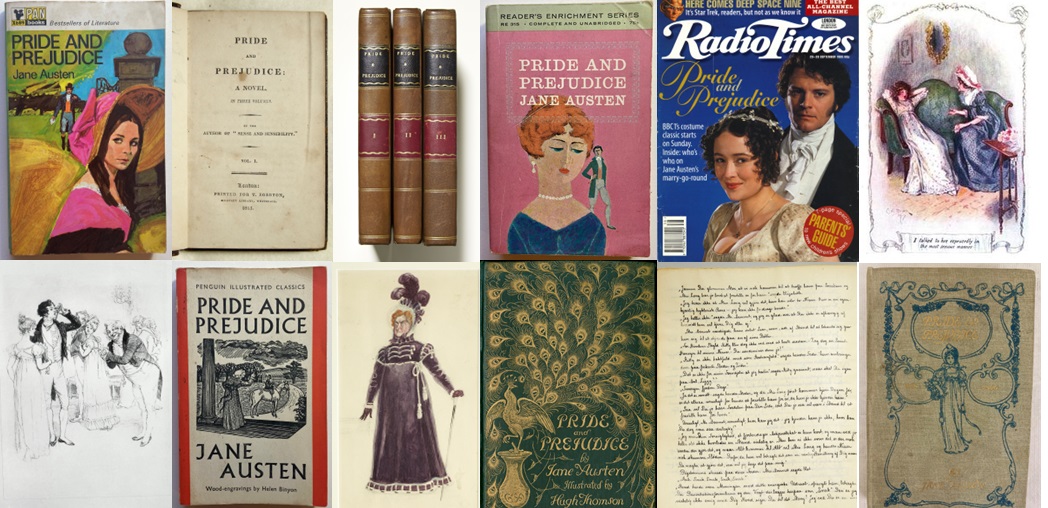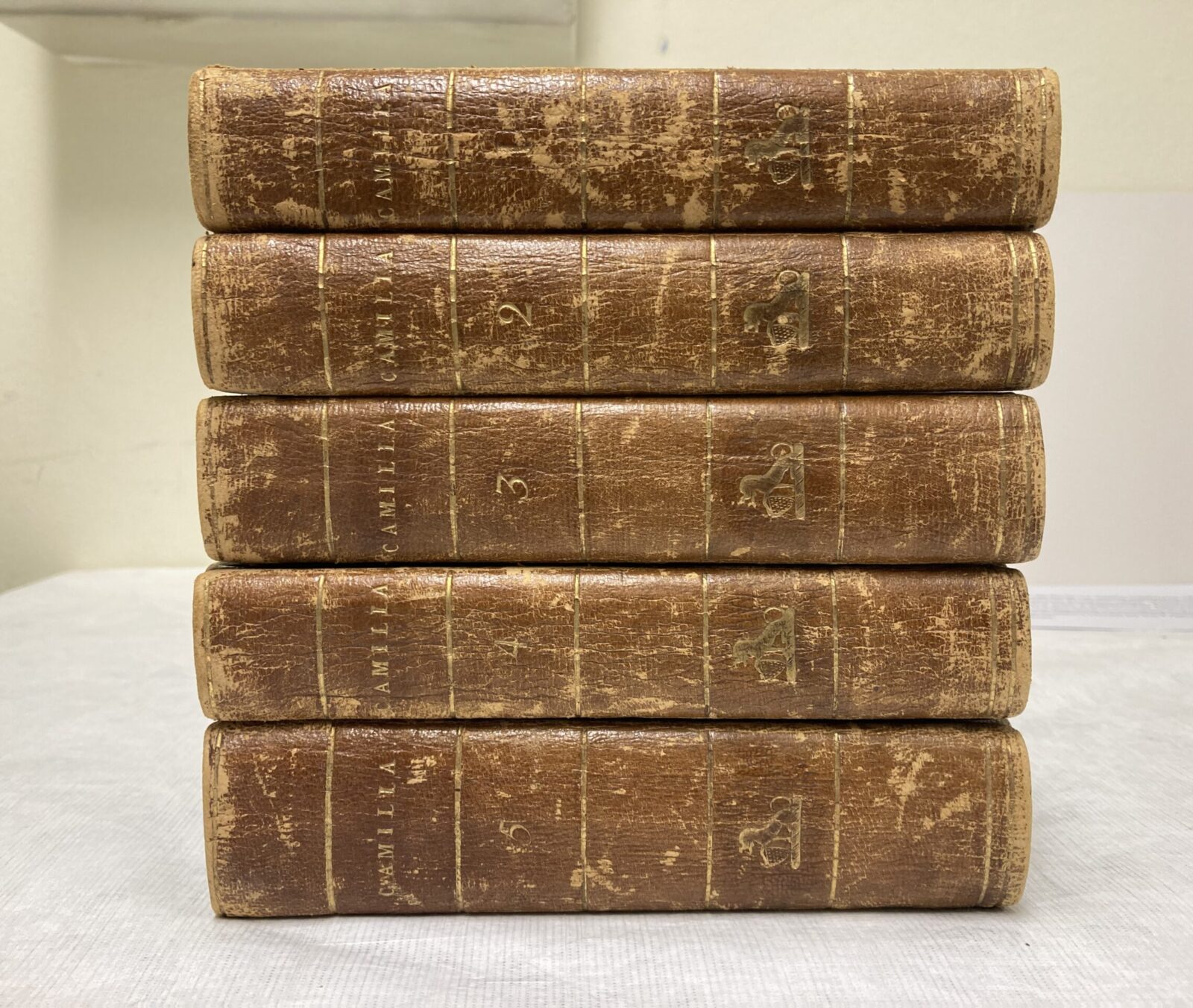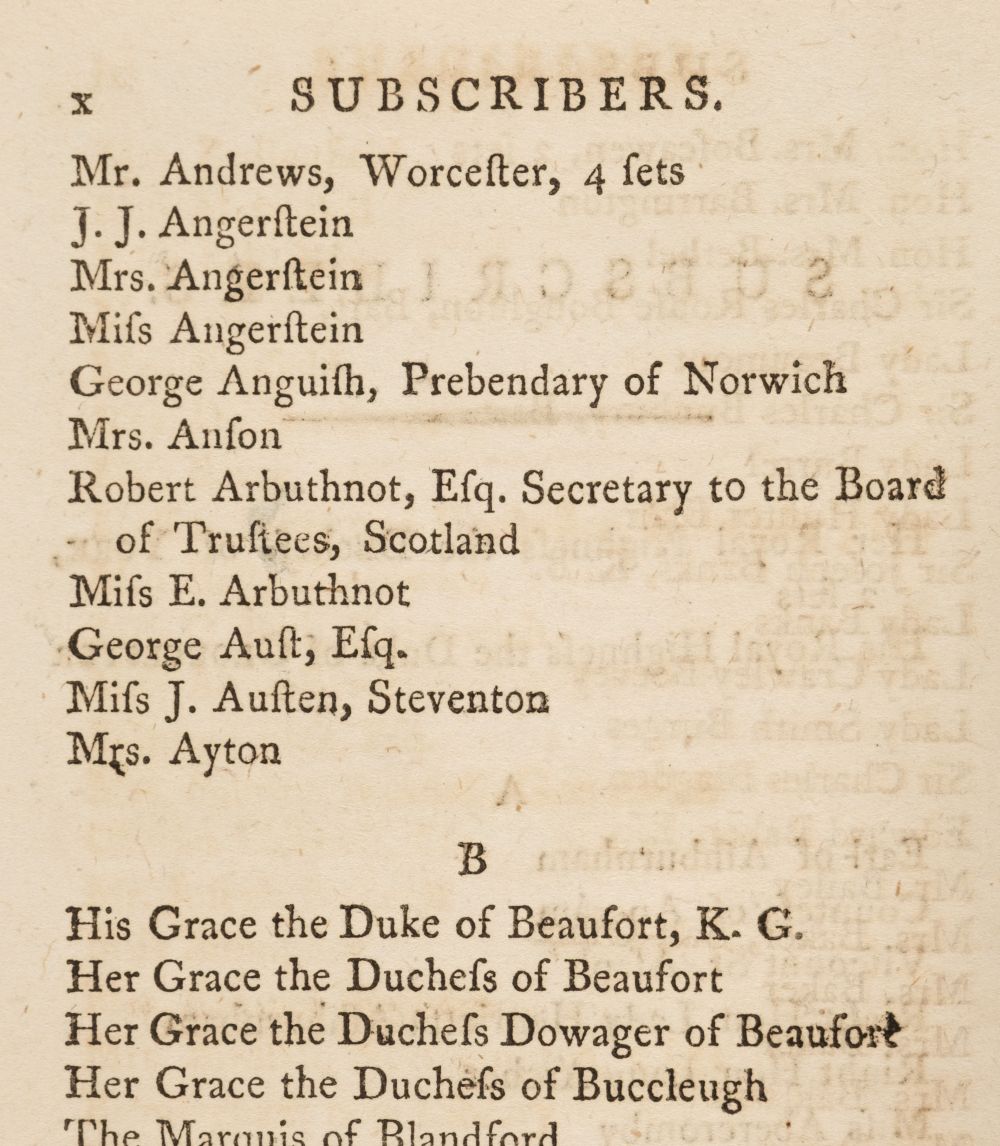Learning her craft: Jane Austen’s teenage writings
Jane Austen grew up as the second youngest of a large, clever, creative family. With seven children at home, they delighted in playing games, telling stories and performing plays. Jane’s older brother James was thought of as the writer of the family; he wrote poems and, along with his brother Henry, founded a humorous weekly periodical called The Loiterer whilst he was at Oxford University.
Jane, too, was a keen writer from an early age. She was wildly innovative, writing bizarre parodies of the novels that she was reading. The girls in her early stories get into trouble, refusing to behave with propriety, and instead eating and drinking to excess, stealing, lying, getting into fights and running away with other girls’ fiancés. The plots move with cartoon-like quickness and abandon. They are hilarious and unsettling by turns.
Jane copied these stories and sketches into three notebooks, which she inscribed with the words ‘Volume the First’, ‘Volume the Second’, ‘Volume the Third’ – consciously imitating the three volume novels that were popular at the time. She inscribed them with elaborate dedications to family and friends. She was practising to be a published writer.
Although at first these capsule stories seem to be worlds away from her mindful and sedate adult novels, these early writings are clearly where Jane found her voice. They are little experiments in the art of novel writing and are full of clues about what was to come.
Jane’s teenage stories were written between the ages of 11 and 17. As she grew older, she experimented with longer fictions, completing first drafts of Elinor and Marianne, First Impressions and Susan before she left Steventon in 1801, aged 25.
OBJECT: Camilla, or, a Picture of Youth, by Fanny Burney. Published by T. Payne, T. Cadell and W. Davies (successors to Mr. Cadell), London. First edition, 1796.
Frances Burney was one of Jane Austen’s favourite authors. She grew up reading Burney’s novels Evelina and Cecilia, and drew inspiration from them for her own works.
In 1795, when Burney opened a subscription list for her next novel, Camilla, charged at one guinea, Jane paid up and was duly included within the subscriber list as ‘Miss J. Austen, Steventon’. It was the first, and only, time in her life that her name was in print.
When Reverend Austen approached the publisher Thomas Cadell in 1797 with an offer of Jane’s novel First Impressions, he may have done so because Cadell had published Burney’s novels Cecilia and Camilla. He specifically compared First Impressions to Burney’s work, writing ‘I have in my possession a Manuscript Novel, comprised in three Vols. about the length of Miss Burney’s Evelina.’ Cadell returned the letter, unwittingly rejecting one of the most successful novels in the history of the English language.


